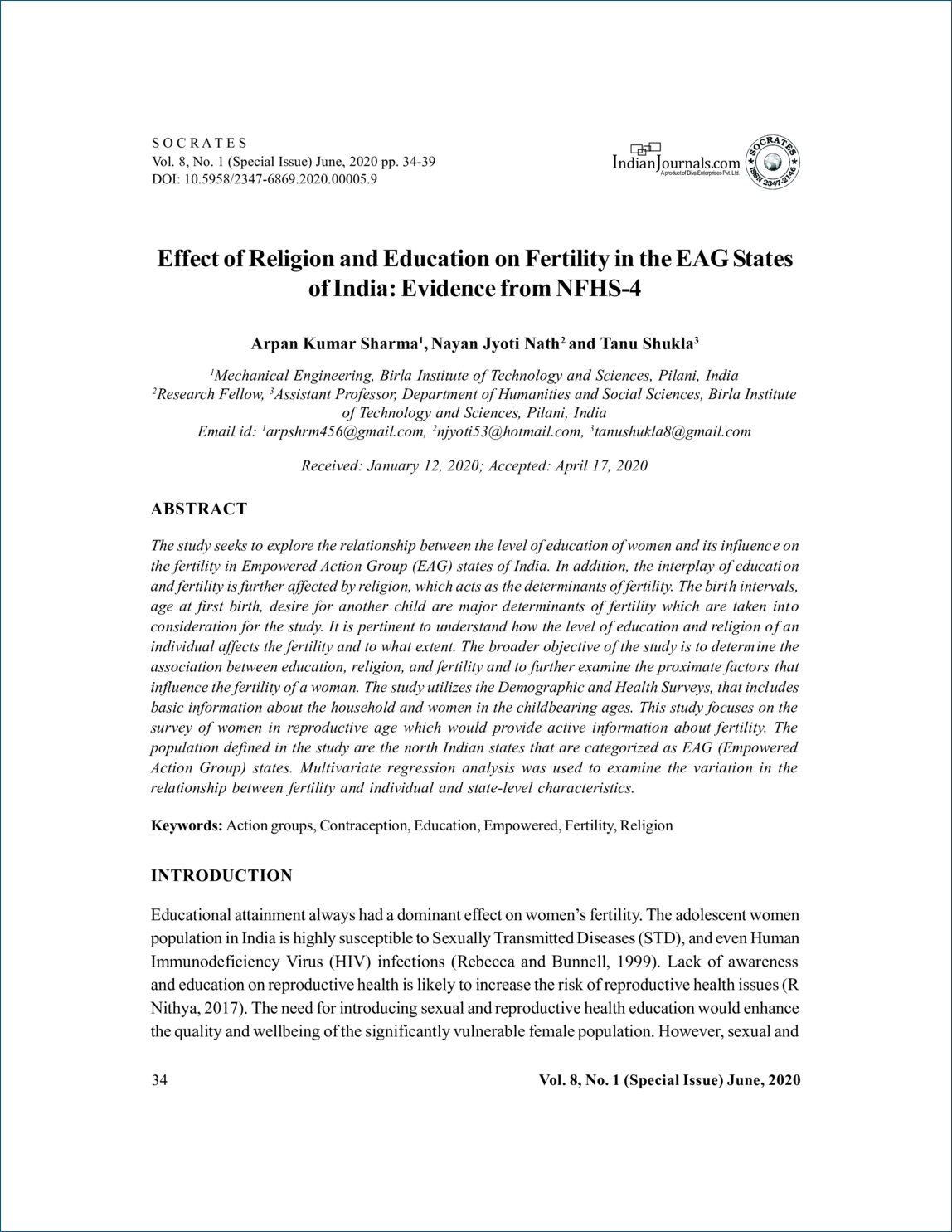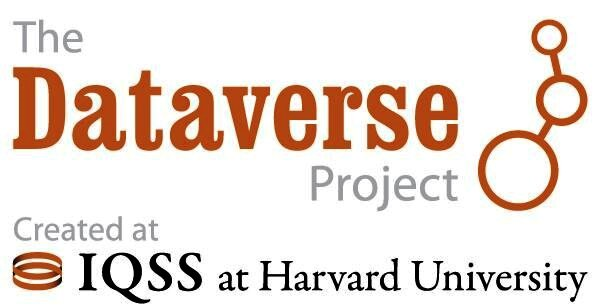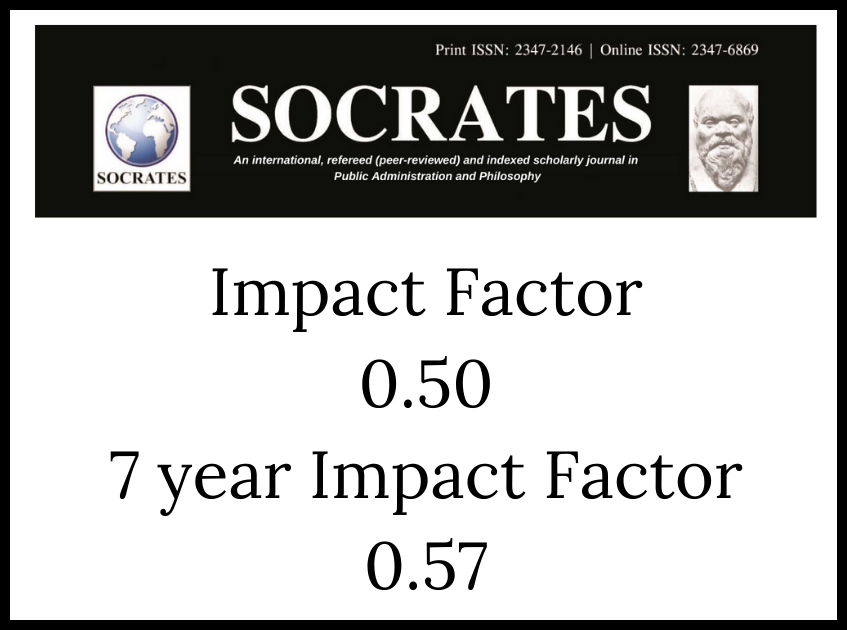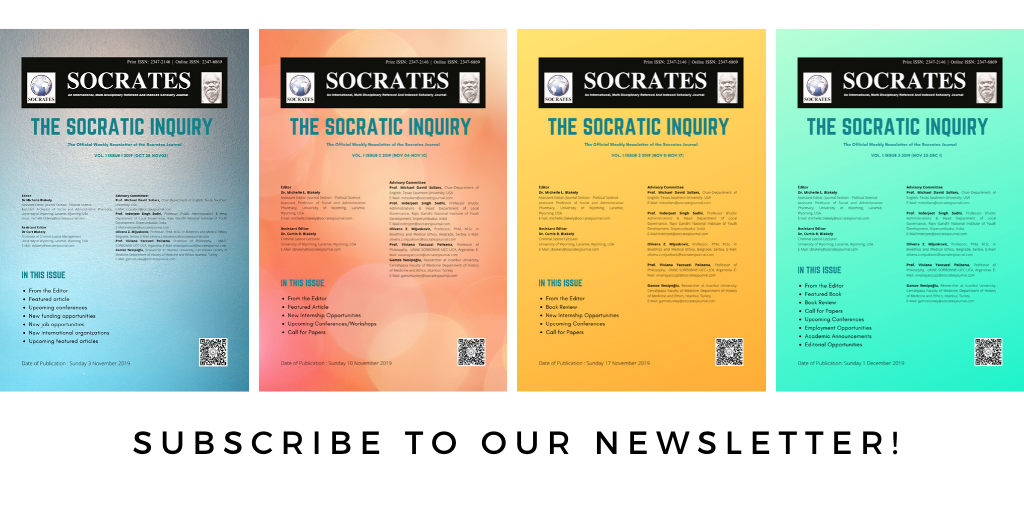Effect of Religion and Education on Fertility in the EAG States in India
Evidence from NFHS-4
DOI:
https://doi.org/10.5958/2347-6869.2020.00005.9Keywords:
Religion, Education, Empowered Action Groups, Fertility, ContraceptionAbstract
The study seeks to explore the relationship between the level of education of women and its influence on the fertility in Empowered Action Group (EAG) states of India. In addition, the interplay of education and fertility is further affected by religion, which acts as the determinants of fertility. The birth intervals, age at first birth, desire for another child are major determinants of fertility which are taken into consideration for the study. It is pertinent to understand how the level of education and religion of an individual affects the fertility and to what extent. The broader objective of the study is to determine the association between education, religion, and fertility and to further examine the proximate factors that influence the fertility of a woman. The study utilizes the Demographic and Health Surveys, that includes basic information about the household and women in the childbearing ages. This study focuses on the survey of women in reproductive age which would provide active information about fertility. The population defined in the study are the north Indian states that are categorized as EAG (Empowered Action Group) states. Multivariate regression analysis was used to examine the variation in the relationship between fertility and individual and state-level characteristics.
DOI: 10.5958/2347-6869.2020.00005.9
Downloads
Metrics
References
Apte, K. (2019). Sexual health largely neglected, reproductive health not a priority in policy discourse.
Census of India. (2011). Annual Health Survey (AHS) in 8 EAG States and Assam – Release of AHS. Office of Registrar General, India.
IIPS, I. (2017). National Family Health Survey (NFHS-4), 2015-16. International Institute for Population Sciences (IIPS), Mumbai, India.
India DHS, (2017). International Institute for Population Sciences - IIPS/India and ICF. 2017. National Family Health Survey NFHS-4, 2015-16: India. Mumbai: IIPS.
Mampatta, S. (2018). Four out of five Indians will still be Hindu even when Muslim population peaks. livemint.
Nayak, D. A. (2017). Assessing the knowledge, attitude and practice of contraception in rural. International Journal of Reproduction, Contraception, Obstetrics and Gynecology.
Rebecca E. Bunnell, L. D. (1999). High Prevalence and Incidence of Sexually Transmitted Diseases in Urban. The jounrnal of Infectious Diseaeses.
R Nithya, G. D. (2017). Do pregnant women know about danger signs of pregnancy and childbirth? – A study of the level of knowledge and its associated factors from a tertiary care hospital in Southern India. International Journal of Advanced Medical and Health Research
Shajahan Ismail, A. S. (2015). Adolescent sex education in India: Current perspectives. Indian Journal of Psychiatry.
Sharma, Arpan, 2020, "Replication Data for: Effect of Religion and Education on Fertility in the EAG States in India", https://doi.org/10.7910/DVN/IMWLR2, Harvard Dataverse, V1

Downloads
Published
How to Cite
Issue
Section
Categories
License
Copyright (c) 2020 Mr. Arpan Kumar Sharma, Nayan Jyoti Nath, Dr. Tanu Shukla

This work is licensed under a Creative Commons Attribution-NonCommercial 4.0 International License.
Revised Copyright/CC license that applies to all the articles published after 05-02-2017
Attribution-NonCommercial 4.0 International (CC BY-NC 4.0)

Copyright/CC license that applies to all the articles published before 05-02-2017
Attribution-Non Commercial-No Derivatives 4.0 International (CC BY-NC-ND 4.0)

Author(s) will retain all the right except commercial and re-publishing rights. In the case of re-publishing, they will have to obtain written permission from the journal. Additional licensing agreements (Creative Commons licenses) grants rights to readers to copy, distribute, display and perform the work as long as you give the original author(s) credit, they can not use the works for commercial purposes and are not allowed to alter, transform, or build upon the work. For any reuse or distribution, readers and users must make clear to others the license terms of this work. Any of these conditions can be waived if you get permission from the copyright holders. Nothing in this license impairs or restricts the authors’ rights. To view a copy of this license, visit http://creativecommons.org/licenses/by-nc-nd/4.0/ or send a letter to Creative Commons, 171 Second Street, Suite 300, San Francisco, California, 94105, USA.
Research Papers published in SOCRATES are licensed under an Attribution-NonCommercial-NoDerivatives 4.0 International (CC BY-NC-ND 4.0)
























